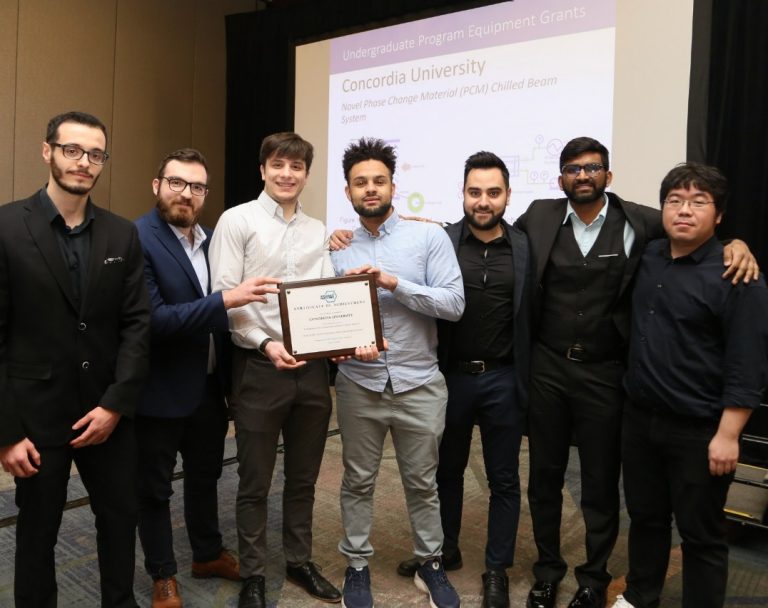Novel Phase Change Materials (PCM) Chilled Beam HVAC Test Stand Capstone Project
1st Tier Capstone SDG Impact Award Winner
Project members
- Ammar Al Zib
- Nima Ashjaee
- Aliou Barry
- Timothée Clochard
- Kazi Shahul Hossain
- Dawoon Jung
- Wanes Nalbandian
Related Sustainable Development Goals
- Goal 9: Industry, innovation and infrastructure
- Goal 10: Reduced inequality
- Goal 11: Sustainable cities and communities
- Goal 13: Climate action
About the project
With technological development on the rise, the waste created rises with it. Human climatization systems have created 8.78% of the world’s total carbon emission in 2020, affecting not only our ecosystems, but our livelihood. It is even predicted that these emissions will more than double by 2050. Knowing the cause, the target for the team was to render these climatization systems more efficient and less energy intensive.
Using the natural properties of Phase Changing Material (PCM) which absorbs large amounts of heat or releases this heat as it changes phase, the PCM is used to absorb the heat generated during the day and release it during the cool of night. Integrated within a heat exchanger, an active chilled beam is combined due to its speed and effectiveness in circulating and transferring heat from within a room of study. Having these two technologies work together allows the HVAC systems to potentially reduce the energy use by 67% and combat against the overuse of fossil-fuel energy. The team plans on performing a first iteration of the design using an analytical process to use as a base, state assumptions and obtain general constants. With this base, the team will then model these designs and simulate them to have a better look at the outcome and compare with the analytical results. This will then all be compared to a test stand simulating the heat cycle of a hospital patient room that will be manufactured and tested by the team. With all these values, a conclusion will be made on the efficiency of the team’s design and if the goals of the team have been met.


